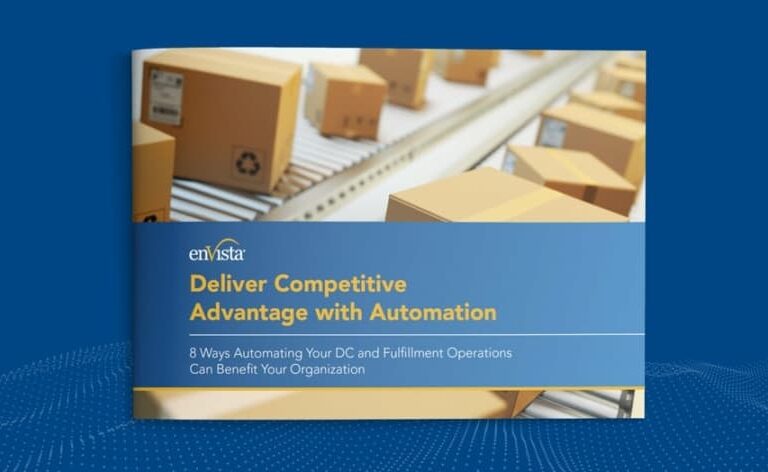As companies look to automate their operations, one of the biggest strategic decisions they face is whether to insource or outsource automation. Each approach comes with its own set of benefits, challenges and long-term implications. Choosing the right path depends on your organisation’s goals, resources and operational needs.
Insourcing Automation
Insourcing automation means a company has full control of the automation process by developing, implementing and maintaining automated systems in-house. This approach requires investing in technology, skilled personnel and ongoing maintenance.
Benefits of Insourcing Automation
Insourcing automation can provide several benefits, including:
- Full control and customisation. Insourcing automation allows organisations to fully customise their chosen software to align with their workflows. For example, manufacturers with complex supply chains can integrate automation tools directly into their existing ERP and WMS systems, ensuring seamless data flow, increased visibility and more effective reporting capabilities.
- Data security and compliance. Keeping automation in-house can help protect sensitive data and ensure compliance with industry regulations.
- Long-term cost savings. While upfront costs may be high, insourcing can lead to lower costs over time as the company builds internal expertise and eliminates reliance on third parties.
- Rapid response and flexibility. With internal teams managing automation, businesses can quickly adjust to changes, troubleshoot issues and improve processes without external dependencies.
- Knowledge growth. Insourcing helps build and retain institutional knowledge. When your team owns the processes, they can work more effectively and build a long-term competitive advantage.
Companies with existing in-house IT resources often find insourcing appealing because it ensures that data security and business continuity remain fully under their control.
Challenges of Insourcing Automation
While there are clear benefits to insourcing, it can also present several challenges, especially for smaller organisations. These challenges include:
- High initial investment. Insourcing requires significant capital for acquiring technology, hiring skilled employees and training teams. This is particularly true for small organisations that lack an experienced, in-house IT team.
- Need for skilled talent. Companies must invest in acquiring and retaining professionals with expertise in automation, software development and system integration. If key IT or operations specialists leave, the organisation risks knowledge gaps that could disrupt automation tools and workflows.
- Ongoing maintenance and upgrades. Businesses are responsible for continuously updating and maintaining automation systems to ensure efficiency, security and reliability.
- Slower innovation. Internal teams may struggle to keep up with the rapid pace of innovation in automation software, especially if it isn’t their sole responsibility. IT teams being stretched thin could lead to slower adoption of emerging features.
- Scalability. What works for a single facility may require modification or significant additional investment to roll out across multiple sites.
Outsourcing Automation
Outsourcing automation involves partnering with third-party providers who design, implement and maintain automation solutions. This allows businesses to leverage external expertise without developing in-house capabilities.
Benefits of Outsourcing Automation
Outsourcing is a popular option for small and medium-sized operations for several reasons, such as:
- Access to specialised expertise. External providers bring experience, industry knowledge and best practices that may be difficult to develop internally. Since they’re specialised providers, they’ll invest heavily in staying up to date with the latest developments, and they may also have pre-build integrations.
- Lower initial investment. Companies can avoid the high capital costs associated with acquiring automation technology and hiring specialised staff. They also benefit from access to software and infrastructure without investing internally.
- Faster implementation. Third-party vendors have established frameworks and resources that enable quicker deployment of automation solutions.
- Scalability and flexibility. Businesses can scale automation initiatives as needed without committing to long-term internal resource development.
For small and midsize businesses, outsourcing reduces the burden on dedicated internal IT teams. It also accelerates deployment and helps ensure smooth operations. For example, a retailer managing seasonal spikes in procurement can leverage an outsourcing partner to stand up automated processes within weeks rather than months, avoiding common pitfalls along the way.
Challenges of Outsourcing Automation
Despite its benefits, outsourcing automation isn’t always the ideal solution. Some common challenges include:
- Limited customisation. Standardised solutions may not fully align with a company’s unique operational requirements. Vendor lock-in can limit flexibility, especially if the chosen automation software is proprietary and lacks data migration tools.
- Data security and compliance risks. Entrusting third-party vendors with sensitive data can introduce security and regulatory concerns. This can be particularly challenging for companies operating in regulated industries or if the outsourcing partner is in a foreign country.
- Ongoing vendor dependence. Businesses rely on external providers for system maintenance, updates and troubleshooting, which can lead to delays or additional costs.
- Higher long-term costs. While initial expenses may be lower, outsourcing fees, service contracts and potential cost escalations can add up over time.
To avoid these pitfalls, organisations should develop a due diligence checklist for evaluating providers. It’s important to ask questions about integration capabilities, data governance policies and support models. They should also consider future options, such as how easy it is to export or migrate data from that particular platform. Without these safeguards, outsourcing can lead to hidden costs and reduced agility.
Which Approach Is Right for Your Business?
Companies that prioritise long-term control and customisation and have the financial capacity to invest in automation and skilled personnel may lean toward insourcing. In contrast, businesses with limited budgets that seek quick deployment and flexibility may find outsourcing more viable.
The agility of outsourcing might also benefit companies expecting rapid growth or changing automation needs. For organisations that lack the necessary technical skills and resources, outsourcing can bridge the gap and accelerate automation adoption. Many businesses adopt a hybrid approach, insourcing core automation processes while outsourcing specialised components.
The choice between insourcing and outsourcing should be driven by your company’s resources and long-term objectives. By carefully evaluating the benefits and challenges of each approach, businesses can develop an automation strategy that maximizes efficiency and cost-effectiveness to drive competitive advantage.





